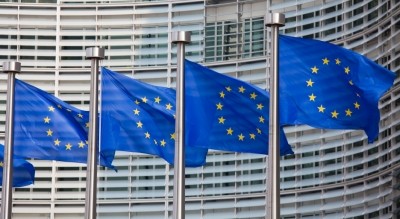Expert View
Novel foods: An opportunity to access innovation

Since the 1st of January this year the new novel food Regulation 2015/2283 is applicable in all Member States of the European Union.
The new Regulation significantly differs from its predecessor, which was full of restrictions. In order to give an accurate overview of all the new opportunities presented by the review of the European novel food legislative framework, a series of articles will be published. Each article will focus on a specific change, starting with the new European Union list of novel foods.
Defining novel foods
To understand fully the new legal framework, we must first recall what the European legislators define as a ‘novel food’.
A novel food is considered to be any food that was not used for human consumption to a significant degree within the European Union before 15 May 1997, the date when the first regulation on novel food came into force. In addition, a novel food should fall into a defined category, ranging from food produced using a new production process to uncommon plants or animals.
Examples of novel foods include agricultural products from third countries, such as chia seeds, or food derived from new production processes, such as UV-treated food.
As soon as a food – or an ingredient of the food - is classified as ‘novel’, it requires a premarket authorization.
Apart from adding several additional novel food categories, the new regulation did not bring any fundamental changes to the definition of novel food. The requirement of a premarket authorization has also remained.
What has changed?
Previously an operator had to be individually authorized by the European Commission to place a novel food on the European market for the first time. This process was characterised as a long, uncertain, time-consuming and expensive procedure.
In the case that the novel food an operator was planning to use was already authorized to be marketed by someone else, the operator had to notify a member state that the food he wished to put on the market was ‘substantially equivalent’ to that specific novel food. The requirement of ‘substantial equivalence’ was assessed on composition, nutritional value, metabolism, intended use and the level of undesirable substances contained therein.
These facts needed to be supported by scientific evidences available and generally recognised or on the basis of an opinion delivered by a national food assessment body.
All those steps certainly implied additional costs and time.
The review of the novel food Regulation has considerably simplified this system. From now on, all novel foods that have been authorized in the past are included in the Union positive list and can be marketed as such or used in foods, by any food business operator.
The only additional requirement is that the authorized conditions of use, labeling and post-market requirements, and any other specifications indicated therein are fulfilled.
Opening up innovation
This change under the new Regulation gives the opportunity to all food business operators, and in particular small and medium-sized enterprises (SME), to boost their innovation and competitiveness, without having to build an expensive and time-consuming ‘notification dossier’ each time they want to use a novel food already authorized. Thus, costs and time can be saved, while maintaining a high level of food safety for European consumers.
The initial Union list was established by the European Commission implementing regulation 2017/2470 and includes all novel foods already authorized under its predecessor. Novel foods that will be authorized in the future will be added to the Union list by means of Commission Implementing Regulations. Once a novel food has been placed on the Union list, it is automatically considered as being authorized and can be used by any food operators.
Finally, the key principle of a positive list, already applicable in other fields of the European food law, such as health claims or food additives, now also applies to novel foods. As a result, whenever a food business operator wants to place a novel food on the market- as such or as an ingredient - he would be subject to the specific process of premarket authorization only if the novel food is not included in the Union list.



















